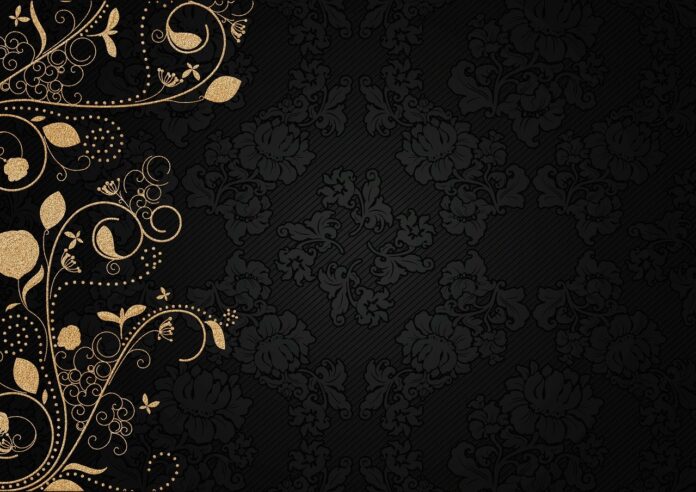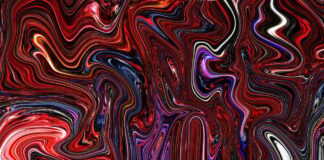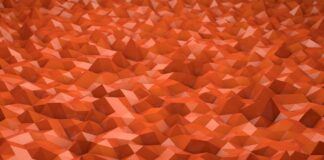Artificial Intelligence (AI) is increasingly becoming an integral part of creative industries, and one of the most exciting areas of AI integration is in the development of digital art creation tools. AI in digital art creation tools is revolutionizing the way artists approach their work, offering new possibilities for creativity, automation, and collaboration. As AI in digital art creation tools evolves, it is transforming traditional artistic processes, helping artists push boundaries, and enabling them to work faster, smarter, and more efficiently. AI in digital art creation tools is not just a passing trend but a powerful force that will change the landscape of digital art for the foreseeable future. This article will explore ten key points about how AI is shaping the future of digital art creation tools and what every artist and enthusiast must know about these developments.
1. Enhanced Creativity with AI-Powered Tools
One of the primary ways AI in digital art creation tools is changing the industry is by enhancing the creativity of artists. Traditionally, artists relied heavily on their skills and intuition to create artwork. However, AI-driven tools can now suggest creative directions, generate color schemes, or even provide automated brush strokes that mimic real artistic styles. For example, AI algorithms can analyze a piece of art and offer alternative color palettes, compositions, or elements, allowing artists to experiment with new ideas they may not have considered.
Moreover, AI in digital art creation tools is enabling generative art, where AI systems use algorithms to create entirely new pieces of artwork based on patterns, themes, and existing styles. Artists can then refine and adapt these AI-generated creations, allowing for collaboration between human creativity and AI innovation. This opens the door to new artistic possibilities, challenging conventional approaches to art-making.
2. Automation of Repetitive Tasks
One of the most significant impacts of AI in digital art creation tools is the automation of repetitive tasks, allowing artists to focus more on the creative aspects of their work. Tasks such as background filling, object scaling, and image cleaning, which would normally take hours of painstaking work, can now be automated using AI algorithms. This results in a significant time-saving for artists, who can spend more time refining their concepts rather than getting bogged down in tedious, manual labor.
For instance, AI can recognize objects in an image and automatically remove unwanted elements or adjust lighting and shadows to create more realistic compositions. This ability to automate tasks is a game-changer for artists working in industries like animation, graphic design, and digital illustration, where speed and efficiency are critical.
3. AI-Enhanced Image Editing and Manipulation
Another transformative impact of AI in digital art creation tools is the ability to enhance image editing and manipulation processes. AI-powered tools can now automatically adjust the composition, color balance, and other elements of digital artwork to achieve desired effects. These tools often provide features like automatic background removal, smart object recognition, and even style transfer, where an artist can apply the visual style of one image to another.
AI can also help with imperfections in digital images, such as pixelation or distortion, by using deep learning algorithms to restore or improve the quality of artwork. For example, AI can upscale low-resolution images to high-quality versions, adding intricate details and textures that might not have been possible with manual editing alone. This opens up new avenues for digital artists to perfect their creations and improve the quality of their work in a fraction of the time.
4. Real-Time Collaboration Between Artists and AI
The integration of AI in digital art creation tools is facilitating real-time collaboration between artists and AI systems. With AI, artists no longer have to wait for hours or days to see the results of their work; instead, they can interact with AI-powered tools in real time and receive instant feedback. This instant collaboration enables artists to work more fluidly and iteratively, making quick adjustments and refining their pieces on the fly.
For instance, AI-based software can now suggest design adjustments in real time, whether it be altering color schemes, repositioning objects, or adjusting lighting. This back-and-forth between artist and AI can create a more dynamic, interactive workflow, enabling artists to experiment with different concepts and ideas quickly. As a result, the creative process becomes more intuitive, allowing artists to focus on refining their vision rather than getting bogged down by technical details.
5. Expanding Access to Digital Art Creation Tools
Historically, digital art creation tools required a certain level of technical expertise, which could be a barrier for many aspiring artists. However, with the integration of AI in digital art creation tools, the process of creating art has become more accessible to people with varying levels of skill and experience. AI can help guide beginners through the creative process by providing step-by-step instructions, suggesting techniques, or even generating preliminary sketches based on simple input.
As AI continues to evolve, it is expected that these tools will become even more intuitive, enabling people without formal art training to create stunning digital artwork. AI can democratize the creative process, breaking down barriers to entry and giving a wider range of individuals the ability to express themselves through digital art.
6. AI-Driven Customization and Personalization
Personalization is another key benefit of AI in digital art creation tools. AI-powered tools can now customize the digital art creation experience based on individual preferences and styles. For example, an artist’s previous works or stylistic preferences can be used to personalize the suggestions or automatic adjustments made by the AI tool.
By leveraging machine learning algorithms, AI can learn an artist’s unique style over time and offer customized recommendations, color schemes, brush styles, and even image layouts that match the artist’s preferences. This customization helps artists maintain their personal touch while also benefiting from the enhanced capabilities that AI provides.
7. Improved Animation and 3D Modeling with AI
The integration of AI in digital art creation tools is also revolutionizing animation and 3D modeling. AI can now assist in creating lifelike animations by automatically generating movement patterns, facial expressions, and even predicting how light interacts with objects in a 3D space. For example, AI algorithms can analyze human motion and generate natural-looking animations based on real-world physics, saving animators countless hours of manual labor.
In 3D modeling, AI tools can assist in creating highly detailed and realistic models by automatically filling in missing details or refining textures. AI can also optimize 3D models for different platforms, ensuring that they are compatible with various devices and virtual environments. These improvements are accelerating the production of high-quality animations and 3D models, especially in industries like gaming, film production, and virtual reality (VR).
8. AI for Art Conservation and Restoration
Another fascinating application of AI in digital art creation tools is its use in art conservation and restoration. AI can analyze and restore ancient or damaged artwork, recreating missing elements or fixing deteriorating parts of digital images. Using deep learning and pattern recognition, AI can compare damaged sections of art with intact areas and generate realistic reconstructions.
In the context of digital art, AI can also help restore old works that have been digitized, ensuring they maintain their original quality. For example, AI can improve old scanned art files, removing artifacts, and restoring color accuracy. This process is not only efficient but also preserves the original essence of the artwork, making it more accessible to modern audiences.
9. AI-Driven Art Curation and Selection
AI is also changing how digital art is curated and selected, particularly in online galleries and art marketplaces. AI algorithms can analyze millions of artworks to identify patterns, themes, and styles that are likely to resonate with specific audiences. By using AI-powered recommendation engines, platforms can suggest artwork to users based on their previous interactions, preferences, and even emotions.
This form of curation allows digital artists to reach broader audiences and ensures that their work is displayed in front of the right people. Additionally, AI can help artists by providing data-driven insights into the trends and preferences of art collectors, allowing them to tailor their creations to what is currently in demand.
10. The Future of AI in Digital Art Creation Tools
Looking ahead, the future of AI in digital art creation tools promises even more exciting developments. AI is expected to continue evolving, offering more sophisticated tools that allow artists to push creative boundaries in ways that were previously unthinkable. As AI becomes more integrated into the artistic process, it will empower artists to create faster, more efficiently, and with greater precision.
Moreover, the use of AI in art creation will likely continue to blur the lines between human creativity and machine-generated content, leading to new forms of art that challenge traditional notions of authorship and artistic originality. With the development of even more advanced AI-driven platforms, the role of the artist may shift from being the sole creator to being a collaborator with AI, resulting in entirely new forms of creative expression.
Conclusion
AI in digital art creation tools is reshaping the world of digital art, offering artists new possibilities, faster workflows, and more personalized creative experiences. From enhancing creativity to automating tedious tasks, AI is providing digital artists with powerful tools that can revolutionize the way art is created and experienced. As AI technology continues to evolve, we can expect even greater advancements in the world of digital art creation, transforming how artists engage with their craft and how audiences experience art.














